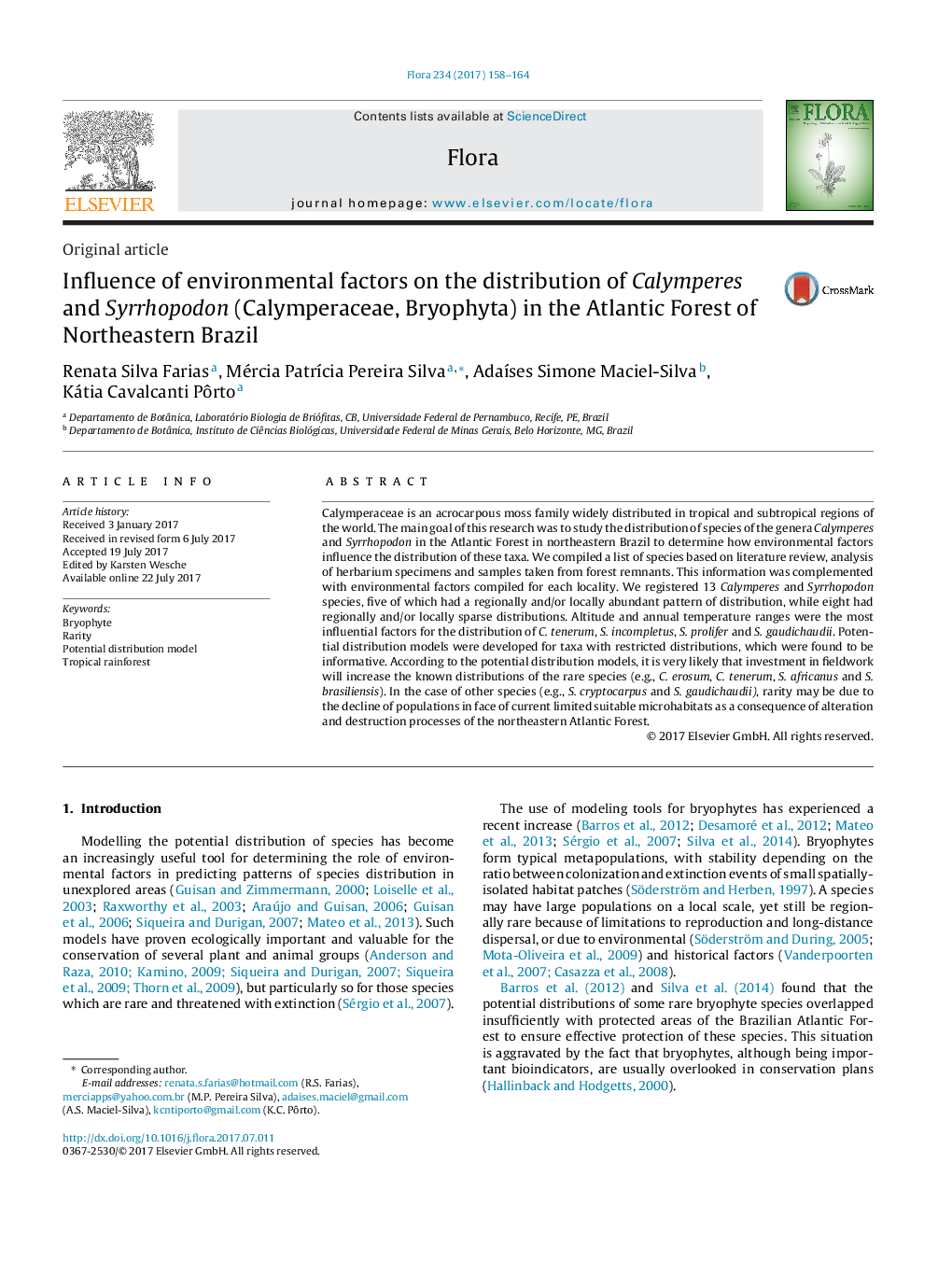| کد مقاله | کد نشریه | سال انتشار | مقاله انگلیسی | نسخه تمام متن |
|---|---|---|---|---|
| 5532324 | 1549925 | 2017 | 7 صفحه PDF | دانلود رایگان |

- How environmental factors influence rarity of mosses is studied.
- Altitude and annual temperature range were the most influential factors.
- Potential distribution models were found to be informative.
Calymperaceae is an acrocarpous moss family widely distributed in tropical and subtropical regions of the world. The main goal of this research was to study the distribution of species of the genera Calymperes and Syrrhopodon in the Atlantic Forest in northeastern Brazil to determine how environmental factors influence the distribution of these taxa. We compiled a list of species based on literature review, analysis of herbarium specimens and samples taken from forest remnants. This information was complemented with environmental factors compiled for each locality. We registered 13 Calymperes and Syrrhopodon species, five of which had a regionally and/or locally abundant pattern of distribution, while eight had regionally and/or locally sparse distributions. Altitude and annual temperature ranges were the most influential factors for the distribution of C. tenerum, S. incompletus, S. prolifer and S. gaudichaudii. Potential distribution models were developed for taxa with restricted distributions, which were found to be informative. According to the potential distribution models, it is very likely that investment in fieldwork will increase the known distributions of the rare species (e.g., C. erosum, C. tenerum, S. africanus and S. brasiliensis). In the case of other species (e.g., S. cryptocarpus and S. gaudichaudii), rarity may be due to the decline of populations in face of current limited suitable microhabitats as a consequence of alteration and destruction processes of the northeastern Atlantic Forest.
Journal: Flora - Volume 234, September 2017, Pages 158-164